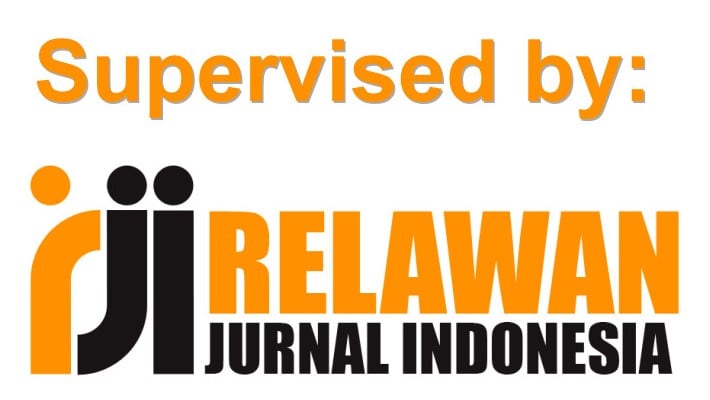Keseimbangan Kehidupan Kerja Ditinjau Dari Dukungan Sosial Pada Pekerja
DOI:
https://doi.org/10.18592/jsi.v7i1.1997Keywords:
Work Life Balance, Social support, The worker, Keseimbangan Kehidupan Kerja, Dukungan sosial, PekerjaAbstract
The balance of work life in Indonesia has become an issue that has received more attention for various companies and agencies. The balance of work life is vital to be able to balance all aspects of the life of workers, both related to personal growth and work life. This study aims to examine the correlation of social support empirically and work-life balance. The more positive the support received, the higher the level of work-life balance. Respondents in this study are people who work both married and those who have not, amounting to 77 respondents. The measuring instrument used is a work-life balance scale with a Cronbach coefficient alpha and a social support scale with a Cronbach alpha coefficient. The data analysis method used is a statistical method with help with SPSS 24 for windows program facilities. Correlation test shows the results of social support and work-life balance have a correlation coefficient r of 0.730 and p = 0.001 (p <0.01). The results of the analysis show that there is a significant positive relationship between social support and work-life balance, and thus the research hypothesis is acceptedReferences
Abe, A. (2012). Keseimbangan Kehidupan Kerja Global Meningkat, Bagaimana Indonesia? Diambil dari http://www.jakartajive.com/2012/05/keseimbangan-kehidupan-kerja-global.html.1/12/10/2014
Brough, P., Holt, J., Bauld, R., Biggs, A., & Ryan, C. (2008). The ability of work—life balance policies to influence key social/organisational issues. Asia Pacific Journal of Human Resources, 46(3), 261–274.
Carlson, M. J., & Magnuson, K. A. (2011). Low-Income Fathers’ Influence on Children. The ANNALS of the American Academy of Political and Social Science, 635(1), 95–116.
Delina, G., & Raya, R. P. (2013). A Study On Work-Life Balance in Working Women. International Journal of Commerce, Business and Management, 2(5), 274–282.
Departemen Agama Republik Indonesia. (2008). Al-Quran dan Terjemahannya. Jakarta: Cahaya Qur’an.
Edralin, D. M. (2012). Innovative Work-Life balance strategies of filipina entrepreneurs: New evidence from survey and case research approaches. Procedia-Social and Behavioral Sciences, 57, 201–208.
Sido, F. (2012). Pekerja di Indonesia Paling Tidak Puas, Mengapa? Diambil dari http://sosbud.kompasiana.com/2012/03/31/pekerja-di-indonesia-paling-tidak-puas-mengapa-450763.html.10/15/11/2014
Halbesleben, J. R., & Rotondo, D. M. (2007). Developing social support in employees: Human resource development lessons from same-career couples. Advances in Developing Human Resources, 9(4), 544–555.
Handayani, A. (2012). Hubungan Kepuasan Kerja dan Dukungan Sosial dengan Persepsi Perubahan Organisasi. Jurnal Insan Media Psikologi, 12(3), 127–137.
Kelly, W. (2014). Work-life Balance Not Just a Women’s Issue. Diambil dari https://edition.cnn.com/2014/06/23/living/work-life-balance-women-men-parents/index.html
Kofodimos, J. R. (1990). Why executives lose their balance. Organizational Dynamics, 19(1), 58–73.
Kuchařová, V. (2009). Work-life balance: Societal and private influences. Sociologický časopis/Czech Sociological Review, 45(06), 1283–1310.
Luck, C. (2014). Keseimbangan Kehidupan Kerja dan Manajemen Kerja. Diambil dari http://www.articlesphere.com/id/Article/Work-Life-Balance-and-Workforce-Management/117660/12/10/2014
Mathew, R. V., & Panchanatham, N. (2011). An exploratory study on the work-life balance of women entrepreneurs in South India. Asian Academy of Management Journal, 16(2).
Munandar, A. S. (2001). Psikologi Industri dan Organisasi, Jakarta. Universitas Indonesia Press.
Noor, K. M. (2011). Work-Life Balance and Intention to Leave Among Academics in Malaysian Public Higher Education Institutions. International journal of business and social science, 2(11).
Pichler, F. (2009). Determinants of work-life balance: Shortcomings in the contemporary measurement of WLB in large-scale surveys. Social indicators research, 92(3), 449.
Rahmadita, I. (2013). Hubungan antara konflik peran ganda dan dukungan sosial pasangan dengan motivasi kerja pada karyawati di Rumah Sakit Abdul Rivai-Berau. Jurnal Psikologi, 1(1), 58–68.
RepublikBJM. (2015). Survei Membuktikan, Banyak Pekerja di Kota-Kota Besar Stress Memuncak. Diambil dari https://republikbjm.wordpress.com/2015/04/20/survei-membuktikan-banyak-pekerja-di-kota-kota-besar-stress-memuncak/
Sarwono, J. (2006). Metode penelitian kuantitatif dan kualitatif.
Sarwono, S. W., & Meinarno, E. A. (2014). Psikologi Sosial. Jakarta: Salemba Humanika.
Sholihah. (2014). Indeks Kebahagiaan Orang Indonesia. Diambil dari http://lubuklinggaukota.bps.go.id/PAPARAN/Indeks%20Kebahagiaan.pdf.9/15/11/2014
Stnaford School of Medicine. (2014). Work Life Balance. Diambil dari http://wellmd.stanford.edu/healthy/work-life-balance.11/17/11/2014
Tariq, A., Aslam, H. D., Siddique, A., & Tanveer, A. (2012). Work-Life Balance as a Best Practice Model of Human Resource Management: A Win-Win Situational Tool for the Employees and Organizations. Mediterranean Journal of Social Sciences, 3(1), 577–585.
The Jakarta Post. (2012). Survey Shows Indonesians Worry About Work-Life Balance. Diambil dari http://www.thejakartapost.com/news/2012/11/01/survey-shows-indonesians-worry-about-work-life-balance.html.12/22/04/2014
Zimet, G. D., Dahlem, N. W., Zimet, S. G., & Farley, G. K. (1988). The Multidimensional Scale of Perceived Social Support. Journal of Personality Assessment, 52(1), 30–41.
Downloads
Published
How to Cite
Issue
Section
License
Authors who publish with this journal agree to the following terms:
- Authors retain copyright and grant the journal right of first publication with the work simultaneously licensed under a Creative Commons Attribution License that allows others to share the work with an acknowledgment of the work's authorship and initial publication in this journal.
- Authors can enter into separate, additional contractual arrangements for the non-exclusive distribution of the journal's published version of the work (e.g., post it to an institutional repository or edit it in a book), with an acknowledgment of its initial publication in this journal.
- Authors are permitted and encouraged to post their work online (e.g., in institutional repositories or on their website) before and during the submission process, as it can lead to productive exchanges, as well as earlier and greater citation of published work (See The Effect of Open Access).





















